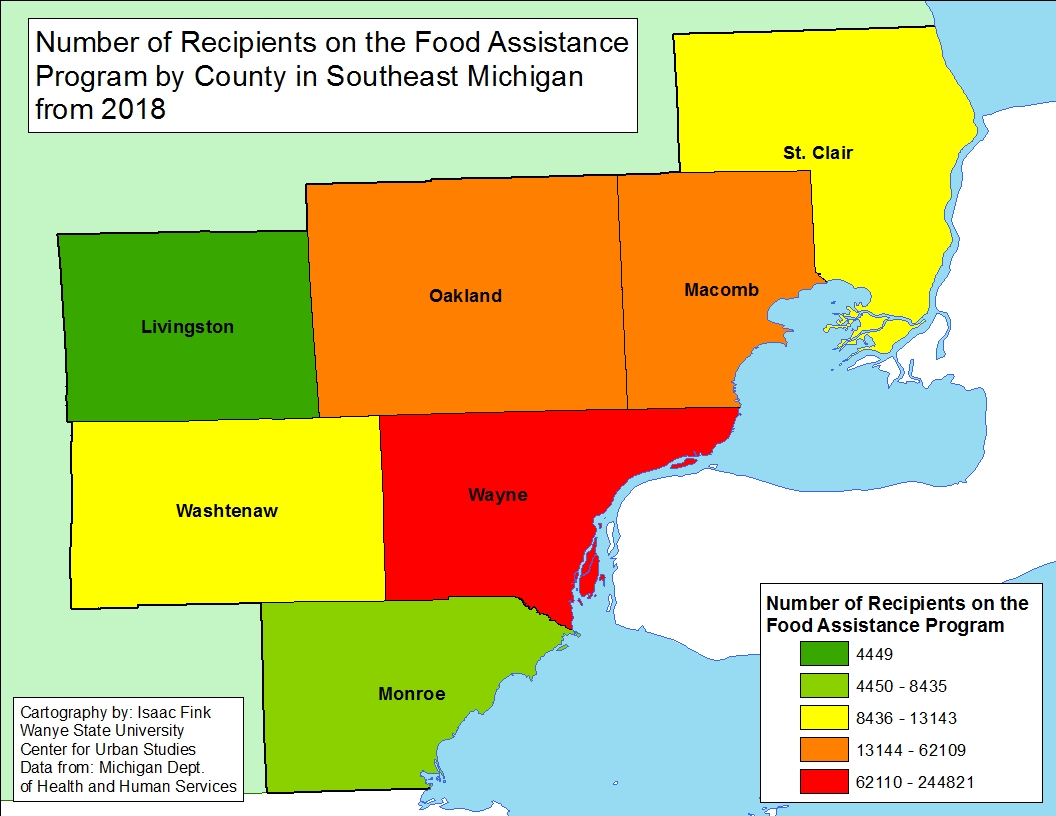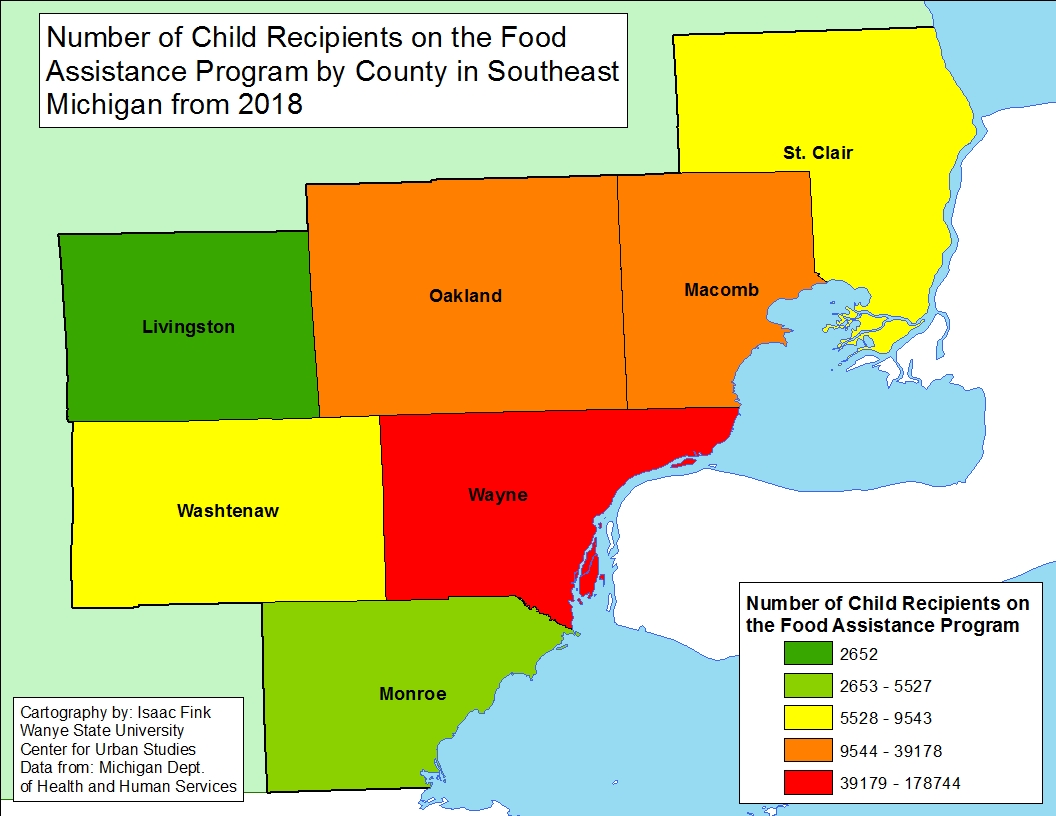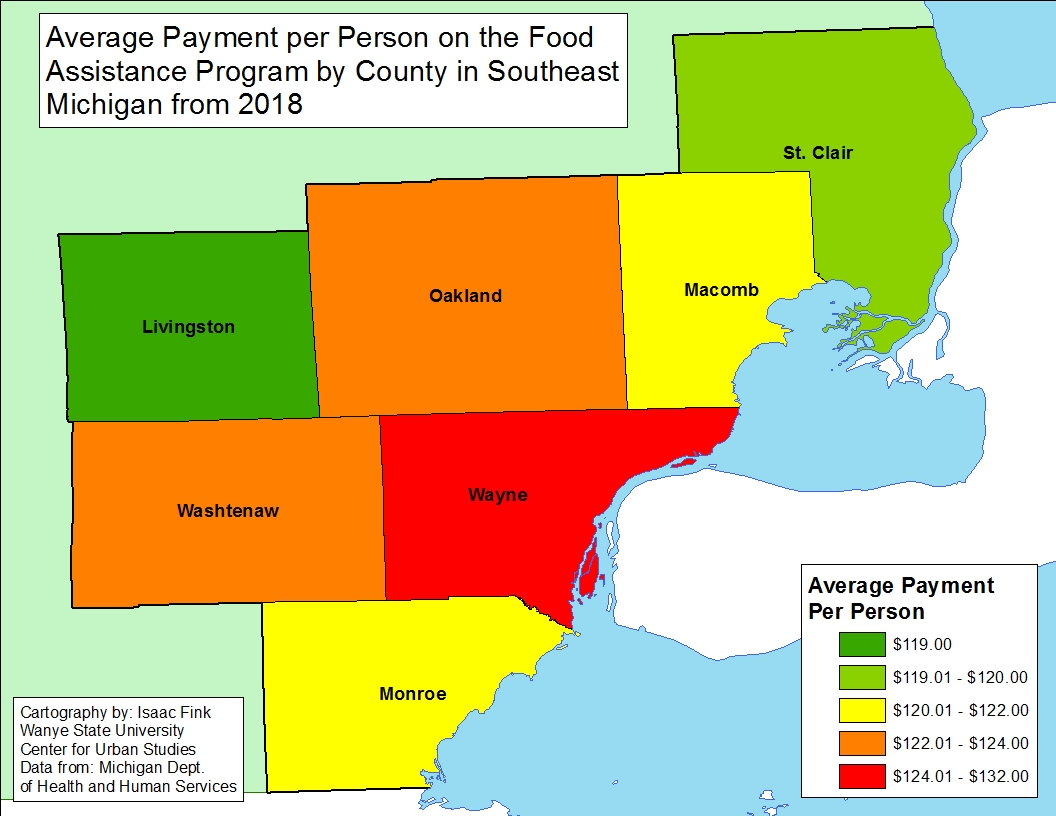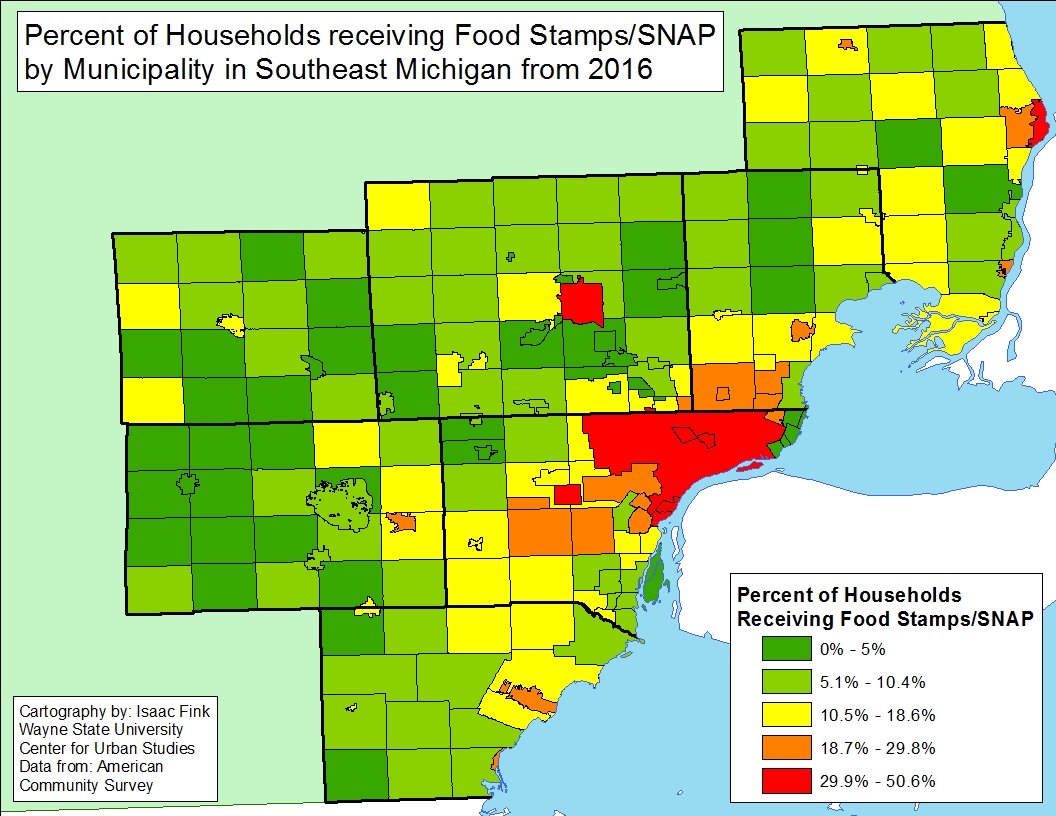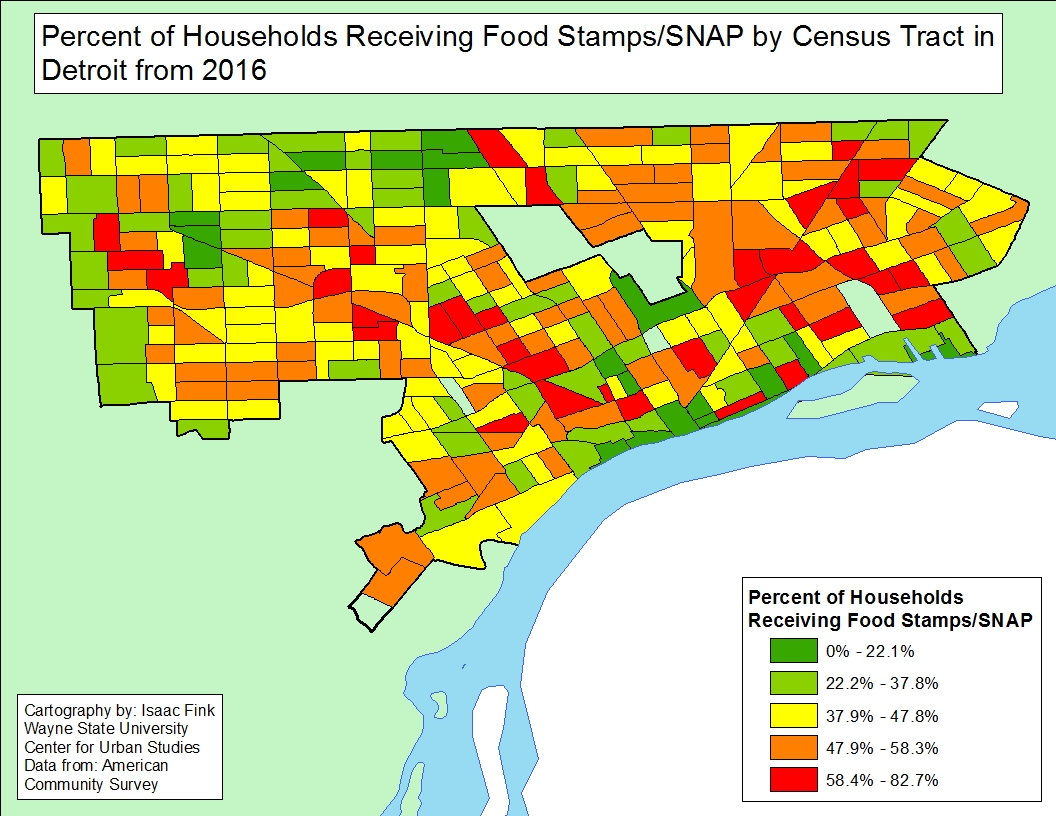In Southeastern Michigan, Wayne County had both the highest average payment per person for the state’s food assistance program and the highest number of both adult recipients and child recipients, according to 2018 from the Michigan Department of Health and Human Services. The Michigan Food Assistance Program is a temporary food assistance program for eligible low-income families and individuals; the program is administered through the U.S. Department of Agriculture. At the federal level this program is referred to as the Supplemental Nutrition Assistance Program (SNAP).
According to the data, thus far in 2018 Wayne County had 244,821 adult recipients of the state’s food assistance program and 178,744 child recipients. Wayne County also had the highest average food assistance payment per person at $132. Macomb County had the second highest number of recipients in 2018, according to the data. In 2018 Macomb had 62,109 adult recipients and 39,179 child recipients. However, Macomb County did not have the second highest average food assistance payment per person. Rather, Oakland County had the second highest average payment at $124. Livingston County had the lowest total of both adult and child recipients (4,449 and 2,652 respectively) and the lowest average payment per person at $119. According to the Center on Budget and Policy Priorities, the average monthly Food Assistance Program payment to Michigan residents in fiscal year 2017 was $125; Wayne County was the only county in the region above this average. Average payments are based on how close to, or below, the poverty line an individual or family are. The higher poverty level of an individual or family means they will likely receive more funding for food assistance.
The maps below further demonstrate why Wayne County had the highest number of Food Assistance Program recipients. Despite the data below being from 2016 (the state did not have data at the municipal or Census tract level and the most recent data from the Census is from 2016), the first map below highlights how Detroit, Highland Park, Inkster, Ecorse and Lincoln Park all have more than 29 percent of the cities’ households receiving food assistance. Outside of the Wayne County, the only other communities with more than 29 percent of its households on the food assistance program were Pontiac in Oakland County and Port Huron in St. Clair County.
In 2016, 42 percent of residents were on the Food Assistance Program (also known as SNAP/Food Stamps) in Detroit, with the concentrations being along some of the City’s main corridors, including Gratiot and Grand River avenues. There were more than 30 Census tracts where between 58 and 83 percent of the families living there were on the state’s food assistance program; these Census tracts were spread throughout the City. On the other hand, there were only about a dozen Census tracts in the City where 22 percent of the families living there were on the food assistance program; these Census tracts were right along the Detroit River and on the City’s northwest side.
As the data in this post shows, the State’s food assistance program is used by thousands of families in the region. With the state’s new requirement that individuals on the food assistance program must work it will be interesting to see how and if the program numbers shift.
